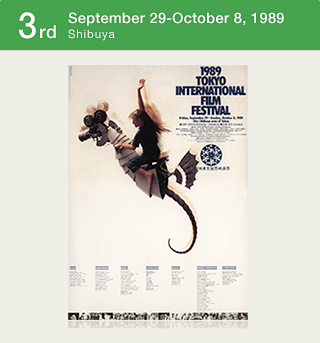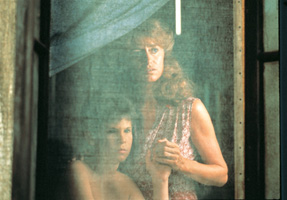this year was held primarily at the Bunkamura complex, which had opened earlier in September. New programs for the festival included "Nippon Cinema Now", with its focus on young Japanese film directors, and the "Asian Film Week", with its emphasis on providing an overview of Asian cinema, and were indicative of the great strides the festival had taken in its desire to speak with a specifically Asian voice.
The poster for the festival was a conceptualized depiction of a fairy-tale princess beckoning moviegoers to her castle. The newly opened Bunkamura complex in the cultural heart of Tokyo indeed became, as the poster suggested, an enchanted castle where people could experience wondrous new works of cinema art. Film historians and critics from seven countries were invi ted to "Internat ional Fi lm Symposium Tokyo 1989"where they looked back on a century of filmmaking and discussed such issues as what makes a film a classic and whether films have been preserved properly. Perhaps not coincidentally, the collaborative Tokyo International Fantastic Film Festival featured an overview of Georges Méliès, indicating that with the last decade of the twentieth century nearing, there was a strong desire to take a fresh look at a past century of cinema culture.









1. Star Ethan Hawke attends the closing screening of Dead Poets Society. 2. Crew and cast members from A Dry White Season. From left, actor Donald Sutherland, director Euzhan Palcy and producer Paula Weinstein. 3. Jean-Jacques Beineix, director of Competition film Roselyne and the Lions. 4. Idrissa Ouedraogo (center), director of Young Cinema Competition Sakura Gold Award-winning film YAABA. 5. Competition juror Toru Takemitsu (right) with Tatsuya Mihashi. 6. Yves Montand, president of the Competition jury, with director Akira Kurosawa. 7. Ron Howard, director of Parenthood. 8. Yuen Biao (left) and Yuko Natori, who later co-starred in Saga of the Phoenix. 9. Actor Ken Takakura makes a short speech at a screening of Black Rain.

























